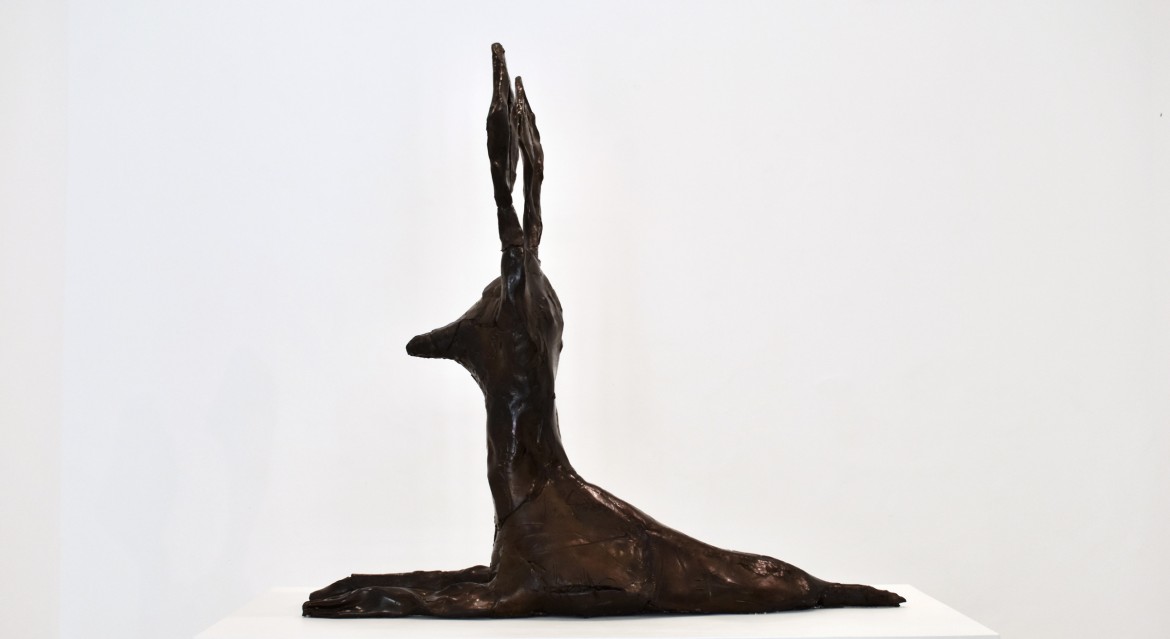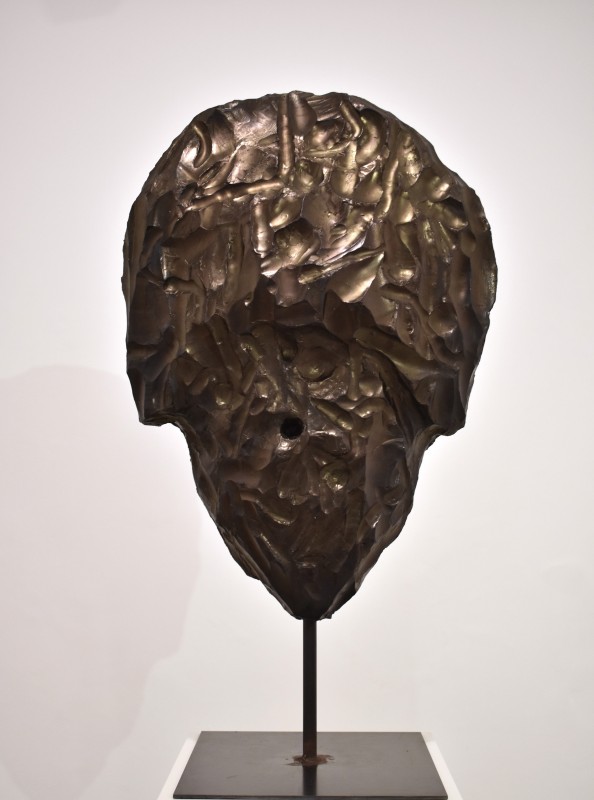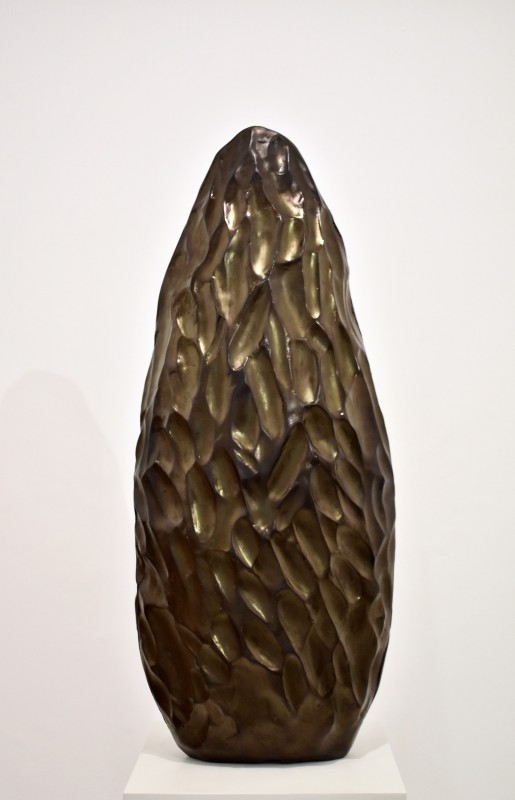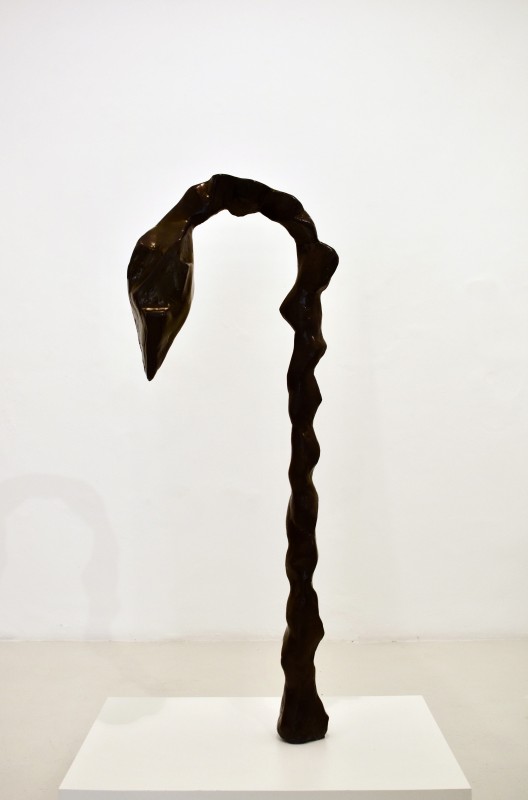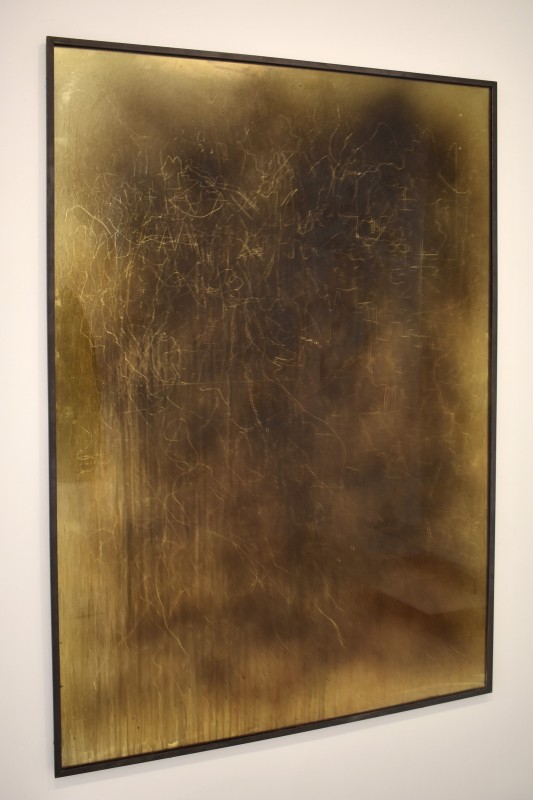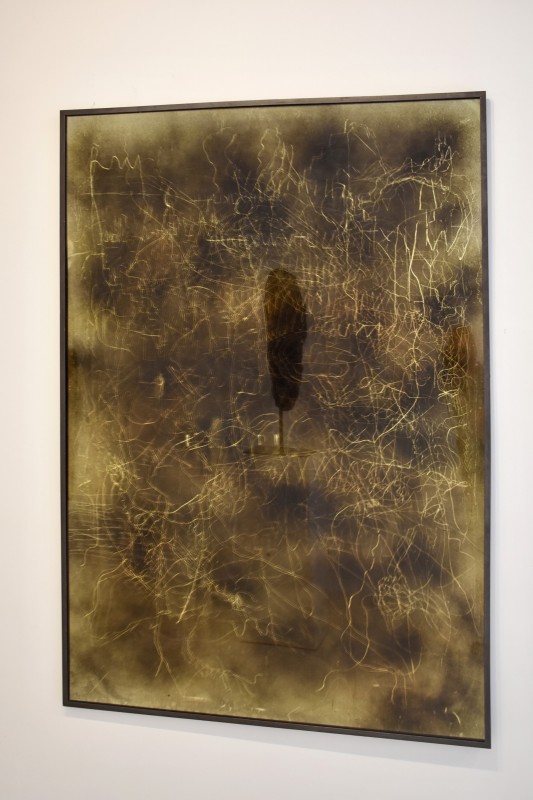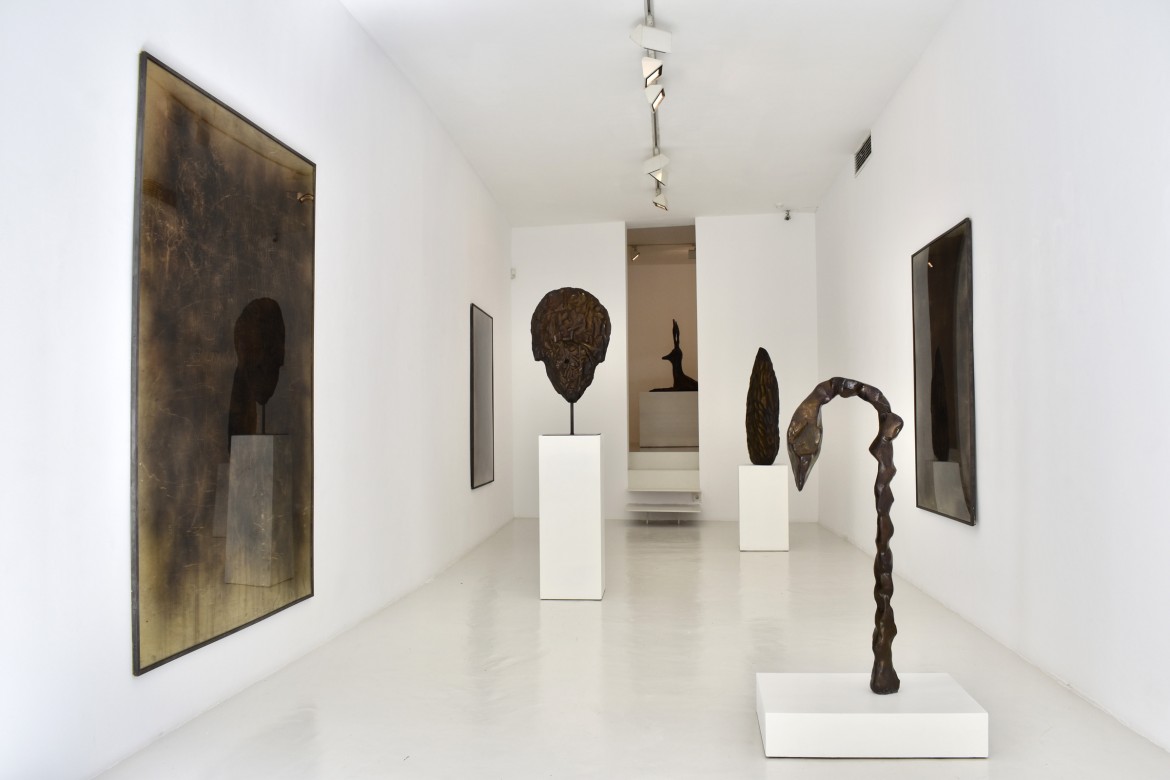Being confronted to Edward Lipski’s work is quite an experience in itself. And this is so essentially because he has the ability to imbue his pieces with a sense of resonance that operates across time and space. His prolific use of ancient, modern and postmodern imagery produces a vibrant body of work characterised by an unusual, but indeed very pleasant, conceptual and visual complexity. Edward Lipski’s ongoing interest in language, visual culture and iconography as well as rituals, religion and nature, results in a multifaceted artistic practice that intertwines a wide range of references and thoughts. Edward Lipski understands art primarily as an act of communication —a complex mechanism of expression and discovery through which he elaborates a vocabulary that seeks to generate a certain degree of discomfort and confusion.
Edward Lipski’s work is based on material and conceptual displacement; and it is through this strategy that he problematises two seemingly opposed terms such as contemporary and tradition. But what if, as Roland Barthes says ‘the contemporary is the untimely’ or as Giorgio Agamben puts it ‘those who are truly contemporary, who truly belong to their time, are those who neither perfectly coincide with it nor adjust themselves to its demands’? Edward Lipski seems to be aware of such an epistemological conundrum and so his artistic practice goes right into challenging our understanding of existence thus casting some serious doubt over any pre-established system of belief. On a formal level, Lipski’s work blends together multiple cultural and religiouss references ranging from long gone civilisations to present societies. This combination of genuine abstract thought and an artistic practice primarily grounded in material culture allows the artist to explore the rituals and the discourses that mediate our relationship with reality.
Seventy thousand years ago saw the birth of the cognitive revolution by which, for the first time in history, humans were able to imagine things that did not exist. Prove of this newfound skill was the Stadel lion-man ivory figurine made some 40.000 years ago. Such a revolution allowed primitive humans not only the ability to dream but also the capacity to share a collective cultural horizon which would later contribute to the development of the first archaic societies and with it to the apparition of a plethora of myths, religions and other forms of power structures.
Considering Edward Lipski’s overall oeuvre, it seems quite clear that he is invested in creating a totally new and unspoiled cosmogony made out of hybrids creatures that instead of telling tales about the origins of the world are more like evidence of an alternative, at times irrational, account of the history of cultures. And he does so in a deadly serious playful manner because while the beholder can certainly recognise the cultural references he makes use of the artworks in themselves remain somewhat unaccessible, shut, mute. A loud muteness, however, because this sense of unreachability is accompanied by a tsunami of echoes that connect with our collective psyche. The most exceptional thing about Lipski’s work resides in the fact that in his continuous speculation he makes the beholder remain attentive, on guard, thus forcing it to continuously reposition itself, both conceptually and affectively.
Skin And Stone presents a new set of artworks that while drawing from archaic primal images they feel unmistakably modern; a profound sense of ancient imperturbability coexists with a fresh and up-to-date touch that actualises the whole lot. There is also, however, a sense of calamity running through all the display. The overall roughness of Axe Head and Tool, for instance, with their brutal deep cuts and abrupt shades turn these pieces into somewhat menacing obscure objects. The Plant and Dog-Rabbit are any less ominous in their appearance —while the former might bring to mind the kind of carnivorous plant from the Jurassic period, the latter recalls the steady figure of Anubis, guardian of underworld, but in this case mockingly hybridised with rabbit attributes. On the walls there are the three exquisite Mystical Vandalism paintings which the artist intervenes by manically scratching the whole surface thus creating a swarm of illegible motives that might point out to a never forgotten primordial act of communication. Lastly, all the works are purposely placed at eye level to increase the intensity of the encounter between the work and the viewer. In the same way, the cohesiveness of the colour palette responds to the artist’s wish to create a continuum along the display that allows him to come up with an immersive environment.
Edward Lipski (London, 1966) has exhibited worldwide including countries such as Belgium, UK, US, Switzerland, Netherlands, Italy and Spain, among many others. Recent solo exhibitions include: The Garden, Bonnefantenmuseum, Maastricht, BE (2017), Tim Van Laere Gallery, Antwerp, BE (2016), Alan Koppel Gallery, Chicago, USA (2015). His work is part of international art collections such as Bonnefantenmuseum, Maastricht, The Netherlands Centraal Museum, Utrecht, The Netherlands MUDAM Luxembourg, The Arts Council, UK, La Maison Rouge, Paris, France, S.M.A.K., Gent, Belgium, M HKA Antwerp, Belgium, Magasin 3, Sweden, Stedelijk Museum het Domein Sittard, The Netherlands BASMOCA, London, UK and Fondation Antoine de Galbert, Paris.
